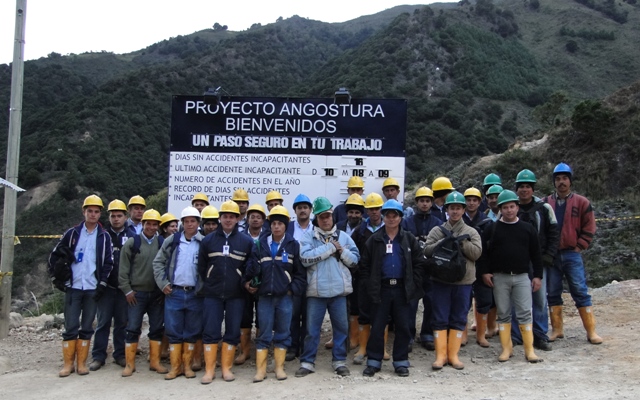Vancouver – Greystar Resources‘ (GSL-T) share price soared 44% on news the Colombian government has reversed its recent decision to invalidate the environmental impact assessment (EIS) for Greystar’s flagship Angostura project.
In late April Greystar was devastated when the Colombian government annulled its Angostura EIS, based on an amendment to the country’s mining code that bans development above 3,200 metres elevation to protect the unique Paramo ecosystem. The company’s share price lost $2.90 or 45% the day the news was released to close at $3.60; over the next four weeks it sagged as low as $3.28.
With the government reversing its decision, the company’s share price reversed its fall: Greystar gained $1.67 or 44% in a day to reach $5.43.
In February Colombia revised its mining code to protect the Paramo ecosystem, though for months the precise definition of where the ecosystem started remained unclear. Officially it contains two regions: the Paramo proper zone starts at 3,800 metres elevation while the sub-Paramo zone begins at the 3,200-metre level.
The shock to Greystar came in late April, when the company was hit with two unexpected realities at once. First, the Colombian government classified the sub-Paramo as part of the Paramo proper, a significant issue as half of the planned open pit and most of the planned infrastructure for Angostura sit above 3,200 metres. Second, the grandfather clause Greystar assumed would protect its Angostura plans from any Paramo implications evaporated.
The developments rendered Greystar’s EIS invalid. Colombia’s Ministry of the Environment, Housing, and Territorial Development (MAVDT) told the company it would have to start over. To put that news into perspective, Greystar has been advancing Angostura for 15 years.
Greystar appealed the annulment within days, arguing that it has complied with all legal requirements to date. The company also challenged retroactive application of the new regulation – Greystar filed its original EIS in December 2009, months before the mining code amendment was passed in February 2010.
The company also pointed out that the Paramo in the area near Angostura, while still unique and deserving of attention, is hardly pristine. It is drier than many other parts of the Paramo, resulting in less vegetation, and has been scarred by artisanal mining and farming up to the 3,700-metre level.
Greystar argued it had already designed the project to minimize its environmental impact and planned to rehabilitate the scarred areas on reclamation.
It seems the Colombian government heeded Greystar’s arguments. The EIS has been reinstated. It is important to note the project’s EIS has not yet been approved; the reinstatement means it can now proceed through the review process as is, without Greystar having to re-engineer the entire mine.
“We are very pleased with the ministry’s decision to reinstate out EIS as filed,” said Steve Kesler, Greystar’s president and CEO, in a statement. “We believe Angostura can be developed in a sustainable fashion that respects the integrity of the environment while delivering economic benefits to all stakeholders. We will continue to work closely with the Colombian government and MADVT to resolve all concerns related to the development of Angostura.”
Greystar is in the midst of producing a feasibility study for Angostura that it expects to complete in the second half of 2010. The prefeasibility study, published in March 2009, contemplated a 70,000-tonne-per-day heap leach operation as well as a 5,200-tonne-per-day milling and flotation process. Together the oxide and sulphide facilities would produce 511,000 oz. gold and 2.3 million oz. silver annually, at an average cash cost of US$391 per oz. gold, excluding silver credits.
Using a base case gold price of US$700 per oz. for the first three years and US$650 for the following 12 years of operation, the Angostura project carries a pre-tax net present value (NPV) of $558 million, using a 6% discount rate and including the government royalty, and should generate a 19% internal rate of return (IRR). Using a gold price of US$750 throughout the mine’s 15-year lifespan, the NPV climbs to $942 million and the IRR rises to 24.9%.
The company has also begun the process of securing access to the US$650 million it will need to build the mine. And the company continues to explore its large land package, with six drill rigs currently turning.
Angostura is home to 312 million proven and probable tonnes of reserve grading 0.9 gram gold per tonne and 5 grams silver.
As of the end of March, Greystar had $119 million on hand, of which $46 million came through the exercise of warrants in the first three months of the year. The company has a 52-week share price range of $2.77 to $7.17 and has 84 million shares outstanding.


Be the first to comment on "Greystar jumps as Colombia reinstates Angostura EIS"